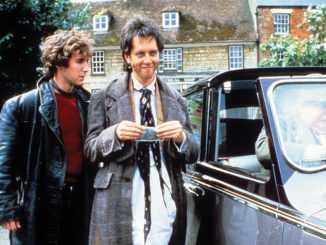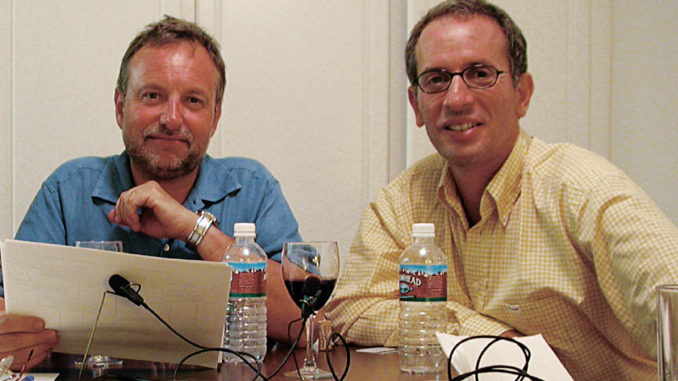
Although production mixers, sound editors and re-recording mixers rely on one another, they seldom have the chance to meet and discuss their mutual concerns. In this unusual conversation, production mixer Chris Munro, sound editor Victoria Rose Sampson and sound editor and re-recording mixer Leslie Shatz share their different points of view about sound and discover they can learn a great deal from each other.
Shatz: This is a great opportunity, because even though we all work on the same movies, we don’t normally meet. I have only a limited idea of what happens on the set now.
Sampson: In my whole career, which is coming up on 30 years, I’ve had maybe three production mixers who came to us in sound editorial and said, “How are my tracks?”
Munro: But how many dialogue editors ever phone up the sound mixer? Usually, I’ll spend time with the picture editor, but I have more knowledge of post than most production mixers. Maybe what we need is some sort of seminar at which dialogue editors and mixers tell production mixers what they would like.
Shatz: In mixing, we sometimes get production tracks that are awful, but then the director will often say, “I love that production mixer. He never held me up.”
Sampson: The mixer made it smooth during production, but terrible in post.
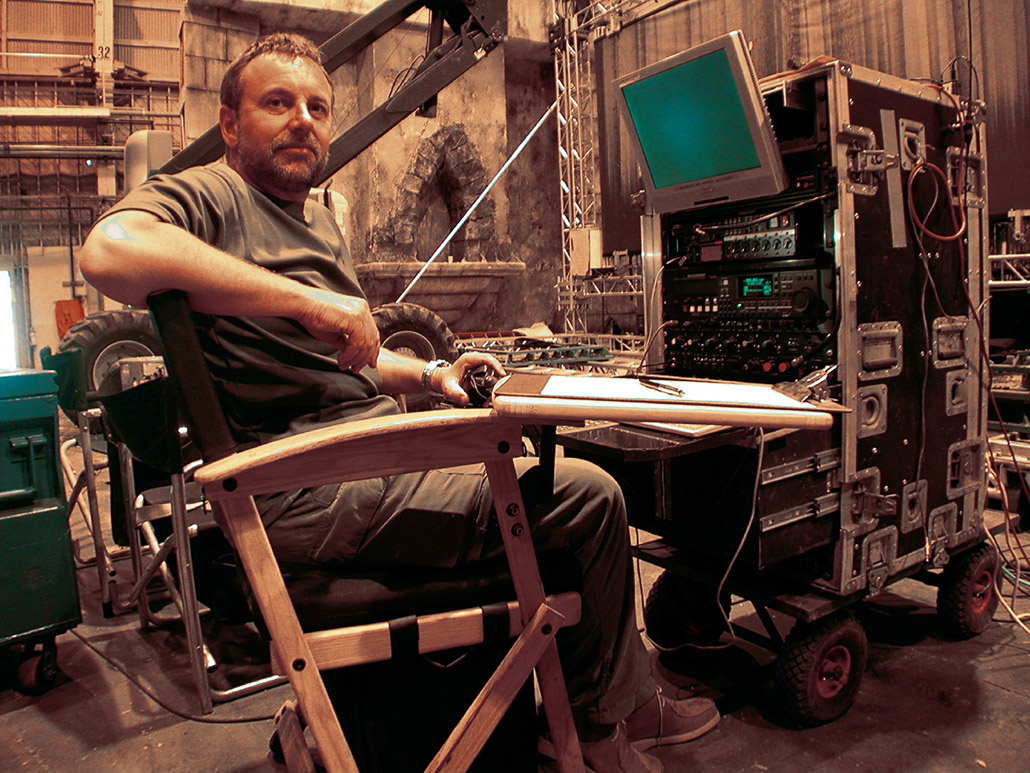
Munro: The director wants to feel as though everything is working in all departments. And our responsibility is to make it work. Often we’re mixing on the fly in a live situation where the actor decides just before the take to switch his lines around. In the past, the actors would rehearse, and they would tell the mixer when they were changing their dialogue. There was a certain discipline that is no longer a part of filmmaking. I rarely get a rehearsal.
Shatz: They don’t block?
Munro: They might block, but sometimes they don’t speak. Or they’ll “rehearse” with the stand-ins. It’s very common now for the actors not to want to over-rehearse, so they’ll shoot the rehearsal. For a mixer, this means you have to play it safe. Safe is going to be okay, but it’s not necessarily going to be best.
Shatz: What happens if after a take, the director loves it, and you say, “But I didn’t get that line?”
Munro: You wouldn’t last very long if you were saying that all the time. The director wants to hear that you got it. The other thing that’s difficult for us is that it’s now very common to shoot with a wide camera and a tight camera simultaneously. And you can’t get the boom into that. You don’t know how the scene is going be cut. Chances are it will be on the tight shots, and then you often could use a lot more boom. But if you have to make a decision right there and then, then you have to go for radio mics for the whole scene.
Shatz: It’s amazing. Nobody shoots one camera anymore.
Munro: When I see a close-up that’s been shot on a long lens as the B camera, and compare it to a properly set-up close-up in the same scene, it sticks out like a sore thumb. The eye line is often too wide — but shooting this way is a necessity in many schedules.

Shatz: Are you getting less time to do your work on set, in terms of putting generators as far away as possible and things like that? Is the situation getting worse because it’s so expensive?
Munro: It’s always a fight. When you first arrive in the morning and see the generator in a bad spot, you have to complain right away. You can’t wait until the first take and then say that you hear the generator. And you have to know what’s important. I’ve learned to be economical and save my fights for the times I most need them. One of our biggest problems now is noisy lighting ballasts for H.M.I. lights. They are now smaller and lighter, but they have noisy cooling fans in them, and many electricians are reluctant to put them off the set.
Shatz: I agree, I want to put my energy where I can be most effective. For example, I try to clean up dialogue in the pre-mix as much as I can, but if I know we’re going to add a lot of music or sound effects, I won’t go too far, because it could degrade the quality of the dialogue unnecessarily.
Sampson: It’s the same for me. When I make an ADR list, I only want to loop the lines that an audience might not hear clearly enough the first time through. If you have people asking “What did he say?” then the audience is taken out of the film for that moment. It disturbs people when they can’t hear the dialogue.
Shatz: I wish people would stop saying, “Oh, we’d better loop this just in case.” Because then they say, “As long as we’re looping this line, let’s loop the whole scene.” All of a sudden you’re practically looping the entire movie.
Sampson: Ideally, we would have time to cut all the dialogue first and then decide what to loop. It would reduce stress on everybody. But schedules are such that you have to loop first, before everything is cut.
“I believe we have to be brave enough to struggle with the new equipment and make it do what we need it to do, because that will benefit everyone. We have to make each project represent an improvement over the last one.” – Chris Munro
Munro: One director I know talks about spending a whole movie asking the lead actor to speak up, because the mixer wanted more volume. Then in post, the dialogue editor asked for a long list of ADR lines, “just in case.” The actor asked, “Why am I looping all this? Every take, you told me I had to speak up for sound.” But because the actor did speak up, the production is good, and in the mix, the loops aren’t used. Then the director does his next film with the same star, and when the mixer asks for more volume, the actor refuses: “What’s the point? You’re going to loop it all anyway.”
Sampson: I get a lot of resistance from actors, and an actor resisting looping does not give good loops. Some actors just aren’t good at looping, and they’re embarrassed to show that. So they’re going to fight and fuss and have it in their contract that they do maybe one day of free ADR, or three days if they’re really new. Trust is the key. If I make a director do a long list of ADR, and then we mostly go back to production sound in the mix, he’s not going trust me or my judgment. I try to ADR only what is absolutely necessary because production sound and performances are usually better.
Munro: Here’s the production mixers’ take on how looping works. The dialogue editors always start too late, so as soon as they come on, they have to prepare a preview and spot ADR, all in the first few days. I’ve walked into editing rooms where they’re doing this, and generally they’re checking the dialogue with a Beta play-out from the Avid. Everything sounds bad, so they ask for a lot of loops. You mix with the ADR, and you dread the idea that someone will ask to go back to the production, because it will completely change the way every other part of the sound works. In my experience, there is a reluctance to go back to the original at that point.
Shatz: I don’t think you’re right about that last part. Even when there’s ADR, I include the production audio in my dialogue premix, no matter how bad it might be. Often when we run the reel, the director and/or editor listen to the looping they had loved on the ADR stage and now hate it. “Are you sure that’s the selected take?” the director often asks. Then when you play the cleaned up production, they’re relieved to be bale to use it. But often the one or two lines that are really needed are given only a half-hearted attempt on the ADR stage, because they’re buried in a list of 200 or 300 others.
“With multi-track machines we can deliberately create an Avid mix the way we want it and still preserve separation for sound. Another big advantage is that we can load the original digital source audio directly into the Avid and synch there. Because synching in telecine is the worst thing on earth as far as I’m concerned.” – Chris Munro
Sampson: Sometimes picture editors and directors don’t want to loop the lines that need it most. In a car chase scene, for example, they can hear the dialogue fine on their Avid speakers, but once they get big music and big sound effects around it, the dialogue sounds terrible because it has to be pushed too hot. If it had been looped, the sound effects and music wouldn’t have to be suppressed.
Munro: One thing that irritates me is when ADR is recorded with a microphone no one ever uses on the set. And over-foleying drives me crazy, too.
Shatz: One reason we prefer production over loops is that production includes movement, and that reduces our need for foley. When the dialogue editor is able to cut production movement behind loops, that can also work well.
Sampson: Foley suffers from the same problems as ADR. It’s this dead environment, very clean. Production has all kinds of detail that’s hard to reproduce, unless you’re doing location foley, as they did on Shawshank Redemption and Green Mile.
Munro: I’ve done some location foleying, but the biggest problem is that we don’t have the time for it.
Shatz: I’ve also heard lots of complaints about how sound mixers never get room tone. But try asking for room tone on set…
Sampson: The biggest help for us is when the director takes a long pause, the way Mark Rydell does. He says “And … action!” There’s a usable space between the “and” and the “action,” and he does the same thing with, “and … cut.” In some movies, nobody stops talking long enough for you to find any fill. But every scene has a different ambience. If it’s a really interesting background, like a room full of extras at a party, it’s helpful if the main actors leave and you let all the extras babble.
Munro: When we have a lot of extras, I always try to shoot them in four-track, so that you’ve got the surrounds as well. But I don’t know whether many production mixers have ever been asked to do that. Whenever I do it, there’s a bit of surprise at first. Then the editors will say, “Hey, that worked really well.”
Sampson: On Frances, they were shooting on the beach, and the mixer put one microphone on the porch where they were doing the scene, and the other down by the water. So the surf matched perfectly.
“It’s creativity that matters. Technology is just a tool. Everything we do, we do to support the story. That’s where our integrity comes from. You have to get your priorities straight, and our first priority has to be telling a good story with sound.” – Victoria Rose Sampson
Munro: That’s something we can do in multi-track recording. For instance, if we were shooting a dialogue scene in an apartment, I would put a microphone in the room above and record it on a separate track. That way, if a motorcycle or siren passed in the master take, you’d have that without the dialogue, so that when you cut to the close-ups, you’d have the background noise on its own.
Shatz: What’s happening now with the Zaxcom Deva and other multi-track production recorders from Aaton, Fostex and HHP is that I’m getting four or more channels for every line of dialogue. It takes much more time to listen to each channel and make sure you don’t introduce phasing by using adjacent mics.
Munro: Couldn’t you just listen to track one as the mix track? If it’s acceptable, don’t bother listening to the other four.
Shatz: If I knew that was the intention, I would gladly do that. But the layout often changes from take to take. And I don’t often know where the microphones are geographically placed in the scene. A little drawing might be helpful.
Munro: That’s what mixers have to be educated to do. I use the Fostex PD-6, which records and mixes six tracks, and I do a live mono mix to track one, or a stereo mix to tracks one and two. That’s the picture editor’s mix, the cutting copy mix. That’s also what’s seen in dailies. But the other four or five tracks are the components of the mix, all pre-fader, without level changes. So if my mix isn’t great, you can go back and use those. Knowing those components are there, I can afford to make a mistake on my mix, and when I have that confidence, I usually do a better mix.
Shatz: That’s the way you work. There’s no guarantee that somebody else with this system is going to work the same way.
Munro: No, but other people are starting to work this way now as well. That’s the whole intention with these new multi-track machines. They allow us to go back to doing what we did with mono Nagras, which was to do the best mix we could. This method fits better with non-linear picture editing systems, too. We’ve hung on to things like mag for far too long. There’s always been this idea that there should be guide audio in the Avid. When people were shooting on stereo Nagras and DATs, the two tracks would be combined during transfer to mag for dailies, and then imported into the Avid. This meant the dailies never sounded good — the mixer was keeping those tracks separate because they weren’t meant to be mixed. With multi-track machines we can deliberately create an Avid mix the way we want it and still preserve separation for sound. Another big advantage is that we can load the original digital source audio directly into the Avid and synch there. Because synching in telecine is the worst thing on earth as far as I’m concerned.
“I’m not advocating going backwards. But I don’t think technology should become our primary focus. During a mix, which is a such a technology-intensive process, I try to always remember to put sound quality first and foremost. After all the filtering, compressing and tinkering, you have to ask,’Does it really sound better?'” – Leslie Shatz
Sampson: That ’s for sure.
Shatz: This is one of my pet peeves. I rarely get a dialogue track that ’s absolutely, reliably in synch.
Munro: And as you know, cutting copy synch becomes sacrosanct. It’s very hard for a dialogue editor to change synch, even if the cutting copy synch is wrong.
Sampson: The director and editor sometimes get used to having it out of synch. I had a situation recently where something was four frames out, but I was told to leave it. That’s what happens when it’s synched in telecine, and not by an assistant who can synch it up on the frameline.
Shatz: But they’re synching to timecode — shouldn’t they be able to get good results?
Munro: It’s not that person’s main job. In my mind, the assistant editor should still be responsible for synch. With these new file-based recording systems, the cutting copy in the Avid is the best quality audio that you can get. It’s synched to picture by the assistant, and that’s what later goes to dialogue editors via OMF, so that when you’re spotting ADR, you know the true quality of the audio.
Shatz: Don ’t most shows digitize from the original sources now?
Sampson: Right now, even if I get an OMF, the audio comes from Beta tapes that were loaded into the Avid. And a lot of picture editors cut at a sample rate of 44.1 because they want to import music from CDs.
Shatz: I find that most cutting rooms are working at 44.1. You tell them that they should work at 48 and do sample rate conversion on CD music, and they say, “How do I do that?” Or they say, “Here, I’ll give you the music, and you convert it and give it back to me so I can put it in.”
Sampson: I find that, too.
Munro: I guess it’s because we digitize straight in, but we’ve always worked at 48. The PD-6 records in something called Universal Disc Format, which is accepted on both PCs and Macs. I record directly onto a DVD-RAM disk. The editing room just needs a FireWire DVD-RAM drive, and they can copy an hour’s worth of material to the Avid in about five minutes. It’s recorded as data, not as audio. The file name for each take is the slate and take number.
“Perhaps what is needed on every production is a person who is some sort of liaison between these departments, and who has the technical knowledge to follow it through. In some respects, I see that as my responsibility. As a production sound mixer, I’m the head of sound during production. And hopefully, I’ll speak with the sound designer or whoever is going to be doing the show in post.” – Chris Munro
Sampson: So you don’t have to deal with that long string of numbers.
Munro: And the editor doesn’t have to type anything in. The file format is also something the Avid is very capable of handling, without conversion. Each take you do is recorded as two separate files, one with two tracks, and the other with four. The two-track file has my mix, and that’s what the picture editor uses. The four-track file gets put in a bin for each scene and is always available.
Sampson: How much sound can you get on a disk?
Munro: About 4.7 Gb, so certainly a day’s worth of dailies. And not only selected takes are imported — everything that was recorded is imported into the Film Composer. And the dialogue editor gets all of that material, too, so when you’re spotting for ADR, you can immediately check what’s in the unused files. Plus you can see what’s on each track through the metadata.
Shatz: The metadata is available in Pro Tools?
Munro: It is if you use MetaFlow, which is a tracking program by Mark Gilbert and Gallery.
Sampson: Do you set up the file names as you ’re recording?
Munro: Yes. I have a little keyboard, and when we start a scene, I put the scene number in. And then the PD-6 automatically advances the take numbers. But I also type in what’s on each track.
Sampson: I like production mixers who give notes on their sound reports. I realize that sometimes there’s no time, but it’s helpful to know that noise is particularly bad on a take, or to get little hints, like, “Usable dialogue on take two.”
Munro: With this, the notes are embedded metadata, stored on the disk in an ALE file [Avid Log Exchange], so that you can print out a sound report from the disk. And because the picture department has all the outtakes, as well as all the tracks, they can dip into that material if necessary for a word or phrase. There are a lot of picture editors who do dialogue fixes.
Shatz: That’s good, because no matter how hard the dialogue editor works to find alternates, the picture editor is the person who can do it the best. He or she knows the intention of the filmmakers in terms of the performance. We can only guess.
Sampson: I can find alternates that may sound better, but clean does not a performance make. I always put my focus on performance and try to find alternates that are consistent with the filmmaker’s intentions. But it’s not always possible.
“Sometimes picture editors and directors don’t want to loop the lines that need it most. In a car chase scene, for example, they can hear the dialogue fine on their Avid speakers, but once they get big music and big sound effects around it, the dialogue sounds terrible because it has to be pushed too hot. If it had been looped, the sound effects and music wouldn’t have to be suppressed.” – Victoria Rose Sampson
Munro: Fortunately, picture editors are taking more of a holistic approach. They aren’t saying, “I’m only interested in picture.” I think this new technique helps, because if a picture editor had to cut with six tracks of production audio, it wouldn’t happen. If I’m giving the picture editor the best mix I can, then the times I’ve got it wrong, he or she won’t mind dipping into the other bin and finding bits that are better.
Shatz: This sounds like a good system, but it only works if there’s communication between our three domains.
Munro: Perhaps what is needed on every production is a person who is some sort of liaison between these departments, and who has the technical knowledge to follow it through. In some respects, I see that as my responsibility. As a production sound mixer, I’m the head of sound during production. And hopefully, I’ll speak with the sound designer or whoever is going to be doing the show in post.
Shatz: In the past, each studio had its own sound director, who would be responsible for setting standards. But there were not as many technology choices to be made because things weren’t evolving so quickly. Now, I find that the tools often get reinvented from one film to the next.
Sampson: The picture assistant could be the link between all three worlds here.
Munro: I think it needs to be a sound person. The picture assistant doesn’t have the knowledge.
Shatz: And I don’t think they have the time. Their primary job is to make the picture editor happy, then make sure that everybody else is serviced.
Munro: Producers often see post production supervisors as technical people. Sometimes they are, but sometimes they’re more budgetary people.
Sampson: I think they ’re more overseers than anything.
Munro: And production mixers have to be educated about frame rates and time code. Just as it’s the DP’s responsibility to get the exposure right, it’s the production sound mixer’s responsibility to get the timecode and frame rate and sample rate correct.
Sampson: Are people watching dailies on film anymore?
Munro: Many still are.
Shatz: Is the entire crew invited to dailies?
Munro: Different directors work different ways. One director I worked with recently doesn ’t go to dailies. He never has.
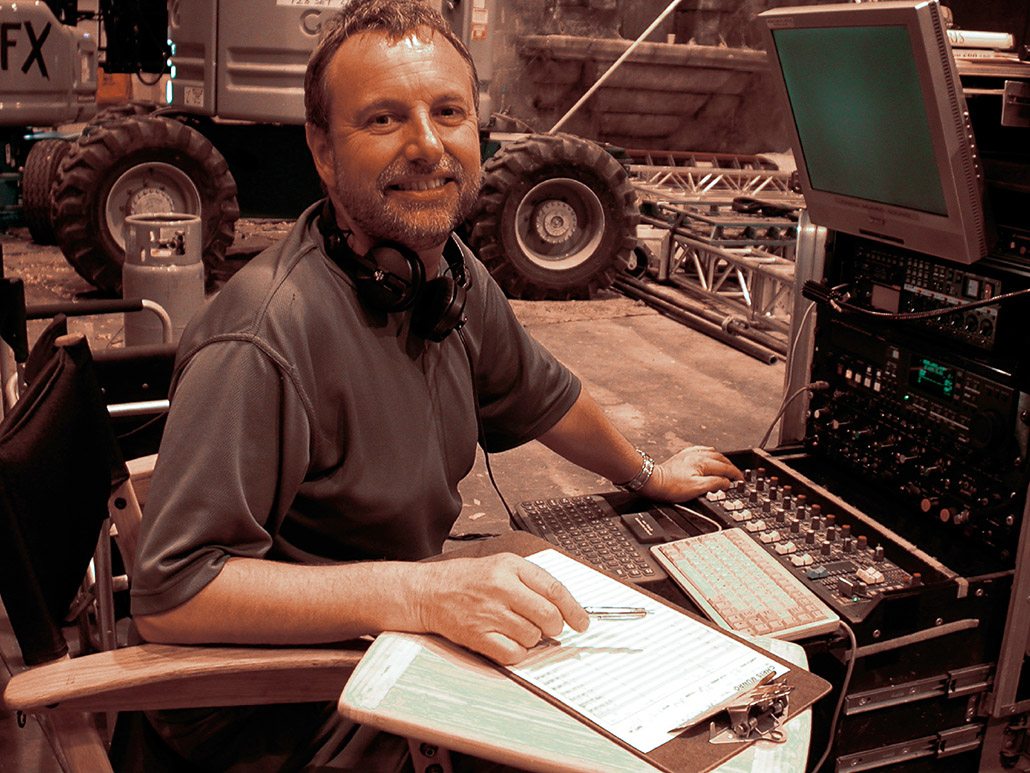
Shatz: But isn ’t that an important time to evaluate quality?
Munro: Sure. I always go to dailies. That’s how I keep track of how things are sounding. What’s great for me with the PD-6 is that I know no level changes can be made during transfers. It’s not played off mag in dailies — you have a DVD-RAM disk running in synch with the projector. My biggest fear is going to dailies and finding the audio doesn’t sound quite right. It’s very tempting to make changes in the way I record it to compensate. But if the problem is in transfer and I don’t realize that, then I’ll be building problems into the original recording.
Sampson: I’m not a fan of production EQ. I’d rather get it clean and give it to the mixers clean.
Shatz: Why do production mixers EQ on the set?
Munro: They think they’re making it sound great. But most of them don’t know that when the sound is edited together, you have no choice but to find the lowest common denominator, which usually means cutting off all the top and bottom. And it sounds like the whole thing was recorded over a telephone. In the old days of the sound director, the mixer wasn’t allowed to use EQ. But the sound director was at dailies, so when someone worried about the sound, he could say, “That’s okay. We can EQ that in the mix.” And people would be happy. Now, a lot of people don’t know how to see dailies — they don’t realize that this isn’t a finished product.
Sampson: They don ’t know how to see pre-dubs or dubs, either.
Shatz: Does the director turn to you in dailies and say, “That sounds like crap”?
Munro: More often it’s the studio execs who have problems with what they are hearing. A lot of studios will only screen dailies on mag — they don’t want to set up their screening rooms with digital dubbers, so they’re listening to a combined track. It’s very common for you to get studio people who will say it sounds terrible, and if it doesn’t improve, “We’re going to have to make some changes.” So the mixer starts to EQ it. If you make people nervous about their positions, they sometimes make irrational decisions.
Shatz: Like everyone else, they can make decisions based on their own self-interest — in this case, their own survival — rather than on what’s good for the film.
Munro: My belief is that the only EQ one should need is some bass roll off, which would stop rumble and any distortion. I actually don’t have any EQ on my mixer.
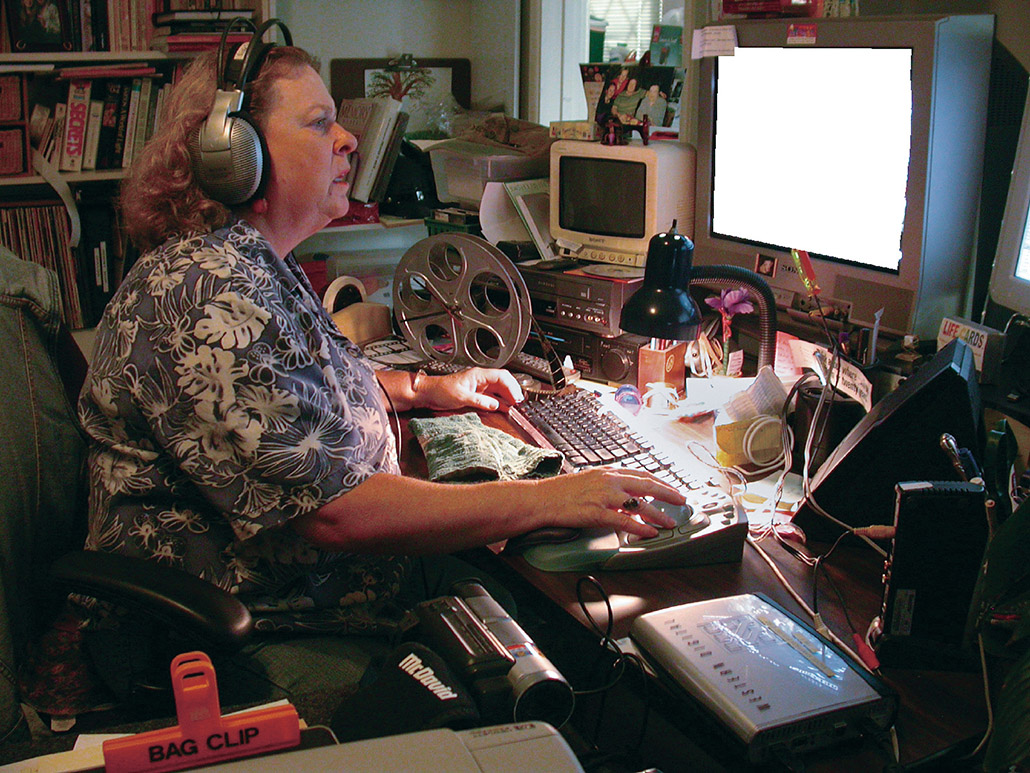
Sampson: A lot of sound editors are now premixing their dialogue and sound effects tracks. How do you feel about getting tracks premixed, Leslie?
Shatz: With dialogue tracks, I’m not sure that someone working in a small room would have the same sensibility I do, even listening on speakers — and they’re sometimes just listening over headphones. Plug-ins are getting better, and in general, the sonic quality of the tools you have on workstations is much better than it used to be. So there are certain things that dialogue editors can do that are helpful, like keeping their track layout consistent. But I would rather make the EQ, noise reduction and level choices myself in a big, quiet room with proper speakers, looking at a large image.
Sampson: And you’re in a theater — the kind of space that the movie will be released in and heard in.
Shatz: For effects, though, I love it when editors bring in tracks already panned and laid out for pre-mixing. That’s helpful.
Sampson: There’s not a whole lot of consistency. Every show is different, and so is every dub stage. Some mixers don’t even want cue sheets anymore — they’re just looking at Pro Tools monitors, so they can see the tracks as they come up. But that doesn’t give them all the information that we sometimes put on a cue sheet.
Shatz: I just ran across that for the first time on a temp mix. It was a rude awakening. I like to have that paper so that I can see the logic of how the editor laid it out.
Sampson: So are we chasing technology or is technology chasing us?
“Even though we all work on the same movies, we don’t normally meet. I have only a limited idea of what happens on the set.” – Leslie Shatz
Munro: I believe we have to be brave enough to struggle with the new equipment and make it do what we need it to do, because that will benefit everyone. We have to make each project represent an improvement over the last one. I deal quite a lot with post production supervisors and producers who want help with workflows. Usually, they say, “We did so and so on the last movie,” and I tell them, “If that’s how it was done on the last show, then it’s almost certainly not right now.”
Shatz: Has all this technology made films better?
Munro: How would you feel if somebody asked you now to mix something on a non-automated desk? Without rock and roll?
Shatz: I’m not advocating going backwards. But I don’t think technology should become our primary focus. During a mix, which is a such a technology-intensive process, I try to always remember to put sound quality first and foremost. After all the filtering, compressing and tinkering, you have to ask,“ Does it really sound better?”
Sampson: It’s creativity that matters. Technology is just a tool. Everything we do, we do to support the story. That’s where our integrity comes from. You have to get your priorities straight, and our first priority has to be telling a good story with sound.



